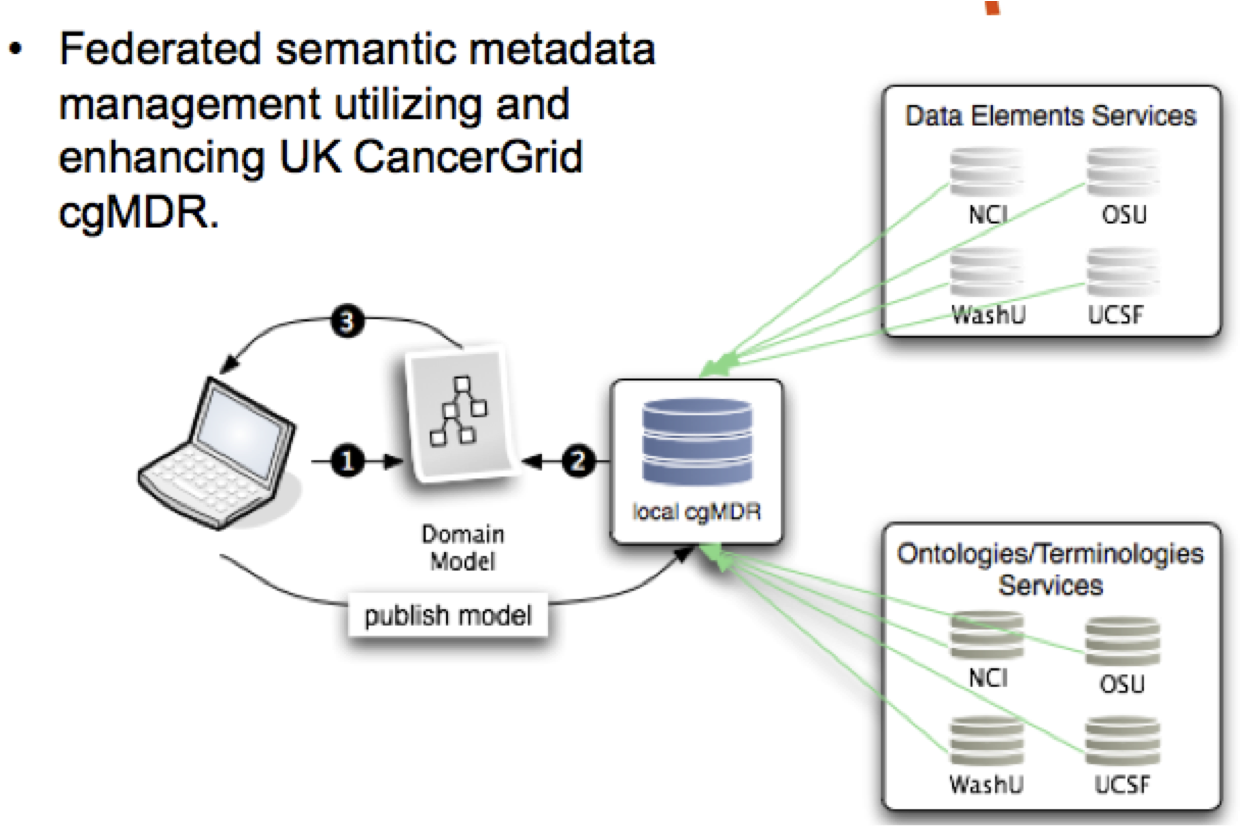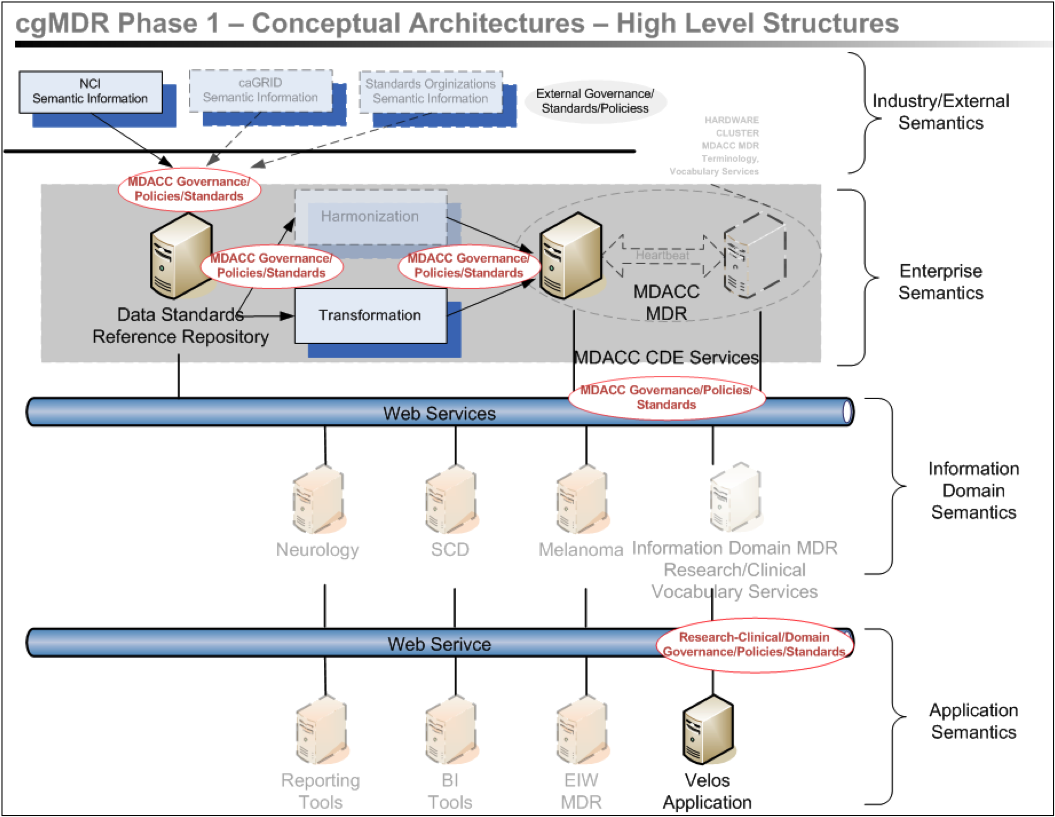Pre Interview:
Item |
Information/Response |
|---|---|
Date: |
12/10/2009 |
Requirement # unique id: |
Init1dbw4 |
Originator/Customer's Name: |
|
Originator/Customer's Company: |
MD Anderson |
Stakeholder Community:
|
caBIG® Community WS Projects |
Summary of requirement pre-interview, by Reviewer: |
MD Anderson is one of potentially many cancer research organizations that will be adopting non-caBIG technologies in order to meet their research and enterprise goals. However, it is highly desirable to adopt caBIG/NCI metadata standards in order to be able to share data and build interoperable systems. The challenge is that there is a need to develop localized data elements and terminologies that are not centrally managed at NCI. Different departments, labs, clinics, etc. within the research organization desire to maintain ownership of their metadata while still reusing common standards whenever possible. Therefore, the proposal is to federate the metadata infrastructure such that different organizations, departments, labs, software applications, etc. can maintain their own metadata while standards flow both top-down and bottom-up. The current semantic infrastructure at NCI is not amenable to this type of federated model. The caDSR has not been designed in a fashion that would allow other organizations to deploy their own caDSR and have data flow between the instances. MD Anderson is proposing to leverage and extend the cgMDR project in order to pilot federation of metadata management at their organization. |
Recommended Next Step Enter one: Follow-up interview, Observe, Use Case Template (text), Use Case Model (formalized/UML diagram), Group Discussion, Prototype, Waiting Room |
Follow-up Interview |
Post Interview - ongoing throughout development of use cases:
Item |
Description |
Information/Response |
|---|---|---|
Requirement Type (required) |
Analyst's assessment of the most appropriate category/type of requirement (no need to ask interviewee):
|
--- |
ConOp Initiative(s) |
|
|
Use Case Linkage (required) |
Which use case(s) is this requirement linked to? (should follow Use Case numbering scheme <SemCon Ops Initiative>.<analysts initials><requirement number>.<use case number>, for example Init1dbw1.1, Init1dbw1.2, Init2dbw2.1, 2.2, etc. |
Use case Number(s): |
Conflicts / Dependencies(required) |
Are there any conflicts with other requirements / use cases? |
Yes OR No - If yes, what and why? |
Next Step (required) |
After reviewing the results of the interview, the forum, and all other materials related to this requirement, the analyst should recommend the next step, then attach the Tiny Link (on the Info tab) for this page to the Master List table. |
Enter one: Follow-up interview, Observe, Use Case Template (text), Use Case Model (formalized/UML diagram), Group Discussion, Prototype, Waiting Room |


